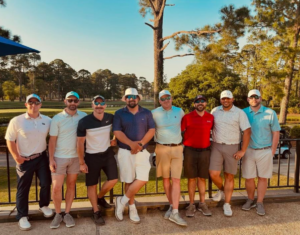Catch Up with the Joneses in Myrtle Beach: the 3 Grand Strand Designs of Golf Design’s Royal Family

The Jones family is royalty in American golf course architecture circles, led by its patriarch, Robert Trent Jones Sr., who has more than 500 courses to his credit. While the family’s influence on American golf is substantial, it has been particularly impactful in Myrtle Beach, the game’s most popular destination. RTJ and his son, Rees Jones, have designed three Grand Strand layouts that have had an outsized influence on the area and its place in the golf travel landscape.
Enjoy a closer look at the Jones family’s work along the Myrtle Beach golf scene.
– In 1948, RTJ designed The Dunes Golf & Beach Club, a course that helped propel Myrtle Beach to national prominence. Jones Sr.’s work at The Dunes Club is universally recognized as one his best. The course’s most famous hole, the par-5 13th known as “Waterloo,” is a prime example of the heroic architecture Jones became known for and it was one of golf’s first “signature” holes, attracting international attention. The Dunes Club continues to be ranked among America’s top 100 public courses and is slated to host Myrtle Beach’s first PGA TOUR event in 2024. The Dunes Club is a bucket list course.
– Rees Jones, often referred to as “The Open Doctor” due to the number of renovations he did on U.S. Open venues, launched his architectural career in Myrtle Beach with Arcadian Shores, his first solo effort, in 1974. Speaking to the quality of design, Golf Digest ranked the layout among its Top 100 Greatest Public Courses in the late 70s. Following a 2019 renovation, Arcadian Shores remains a top 20 Myrtle Beach design.
– Rees later opened his namesake layout, the Jones Course at Sea Trail Resort, in 1989, helping pave the way for the explosive growth of golf just across the border in Brunswick County, N.C. The course is among the best on the Tar Heel side of the state line and an anchor for Sea Trail.
The Joneses haven’t designed a surplus of Myrtle Beach courses, but the family’s impact on the market is undeniable.



